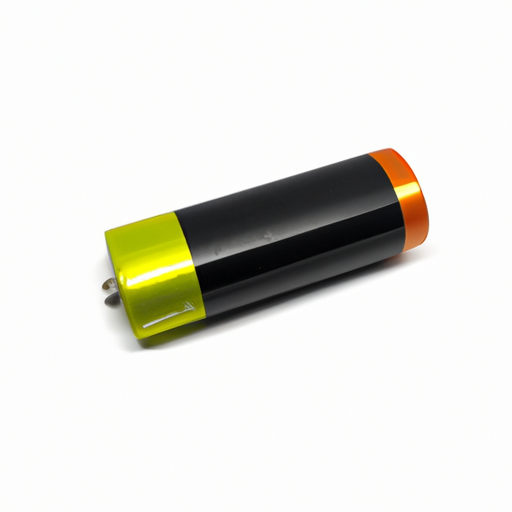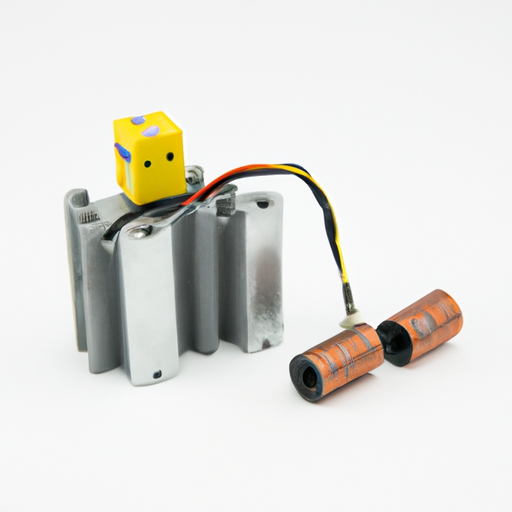What are the Product Standards for Battery Holder Pins?
I. Introduction
Battery holder pins are essential components in various electronic devices, providing a reliable connection between batteries and the circuits they power. These pins ensure that energy flows efficiently, enabling devices to function as intended. Given their critical role, adhering to product standards for battery holder pins is paramount. Standards not only ensure safety and reliability but also enhance compatibility across different devices and manufacturers. This article aims to explore the significance of product standards for battery holder pins, the key standards that govern them, and the future trends shaping their development.
II. Understanding Battery Holder Pins
A. Description and Function of Battery Holder Pins
Battery holder pins are metallic connectors designed to secure batteries in place while facilitating electrical contact. They are typically found in battery holders, which are used in a wide range of applications, from consumer electronics to automotive systems. The primary function of these pins is to ensure a stable and efficient connection, allowing for the transfer of electrical energy from the battery to the device.
B. Types of Battery Holder Pins
1. **Spring-loaded Pins**: These pins use a spring mechanism to maintain contact with the battery terminals, accommodating slight variations in battery size and ensuring a consistent connection.
2. **Fixed Pins**: Fixed pins are rigid and do not move. They are designed for specific battery sizes and are often used in applications where the battery is securely held in place.
3. **Solderable Pins**: These pins can be soldered directly onto a circuit board, providing a permanent connection. They are commonly used in applications where a stable and long-lasting connection is required.
C. Applications of Battery Holder Pins in Various Industries
Battery holder pins are utilized across multiple industries, including consumer electronics (like remote controls and toys), automotive (in electric vehicles and key fobs), medical devices (such as portable monitors), and industrial equipment. Their versatility and reliability make them indispensable in ensuring that devices operate efficiently.
III. Importance of Product Standards
A. Ensuring Safety and Reliability
Product standards for battery holder pins are crucial for ensuring the safety and reliability of electronic devices. Standards help mitigate risks such as short circuits, overheating, and battery leakage, which can lead to device failure or even hazardous situations.
B. Enhancing Compatibility and Interoperability
Adhering to established standards ensures that battery holder pins are compatible with various battery types and devices. This interoperability is vital for manufacturers, as it allows them to design products that can work seamlessly with components from different suppliers.
C. Facilitating Quality Control and Manufacturing Processes
Standards provide a framework for quality control, helping manufacturers maintain consistent production quality. By following these guidelines, manufacturers can reduce defects and improve overall product performance.
D. Regulatory Compliance and Market Access
Compliance with product standards is often a prerequisite for market access. Regulatory bodies may require that products meet specific standards before they can be sold in certain regions. This compliance not only enhances consumer trust but also opens up new markets for manufacturers.
IV. Key Product Standards for Battery Holder Pins
A. International Standards
1. **International Electrotechnical Commission (IEC)**: The IEC develops international standards for electrical and electronic devices, including battery holder pins. Their standards focus on safety, performance, and environmental impact.
2. **International Organization for Standardization (ISO)**: ISO standards cover a wide range of industries and ensure quality, safety, and efficiency. For battery holder pins, ISO standards may address material specifications and manufacturing processes.
B. National Standards
1. **American National Standards Institute (ANSI)**: ANSI oversees the development of voluntary consensus standards for products in the United States. Their standards for battery holder pins focus on safety and performance.
2. **Underwriters Laboratories (UL)**: UL is a safety certification organization that tests and certifies products for safety. Battery holder pins that meet UL standards are recognized for their reliability and safety in various applications.
C. Industry-Specific Standards
1. **Consumer Electronics Association (CEA)**: The CEA develops standards specific to consumer electronics, ensuring that battery holder pins used in these devices meet industry requirements.
2. **Automotive Industry Standards**: The automotive industry has specific standards for battery holder pins used in vehicles, focusing on durability and performance under extreme conditions.
V. Technical Specifications
A. Material Requirements
1. **Conductivity and Corrosion Resistance**: Battery holder pins must be made from materials that offer excellent electrical conductivity and resistance to corrosion. Common materials include copper and nickel-plated brass.
2. **Mechanical Strength and Durability**: The pins should withstand mechanical stress and fatigue, ensuring they maintain their shape and functionality over time.
B. Dimensional Standards
1. **Pin Size and Shape**: Standardized dimensions for pin size and shape ensure compatibility with battery holders and devices.
2. **Tolerances and Fit**: Precise tolerances are necessary to ensure a snug fit between the pin and the battery terminal, preventing loose connections.
C. Electrical Performance
1. **Voltage and Current Ratings**: Battery holder pins must be rated for the appropriate voltage and current levels to ensure safe operation.
2. **Insulation Resistance and Dielectric Strength**: These specifications ensure that the pins can withstand electrical stress without failing or causing short circuits.
VI. Testing and Certification
A. Overview of Testing Methods for Battery Holder Pins
1. **Mechanical Testing**: This includes tests for tensile strength, fatigue, and impact resistance to ensure the pins can withstand physical stress.
2. **Electrical Testing**: Electrical tests assess conductivity, insulation resistance, and performance under load conditions.
3. **Environmental Testing**: These tests evaluate how battery holder pins perform under various environmental conditions, such as temperature fluctuations and humidity.
B. Certification Processes and Bodies
1. **Importance of Third-Party Certification**: Third-party certification provides an unbiased assessment of product compliance with standards, enhancing consumer trust.
2. **Common Certification Marks and Their Significance**: Certification marks, such as UL and CE, indicate that a product has been tested and meets specific safety and performance standards.
VII. Challenges in Compliance with Standards
A. Variability in Standards Across Regions and Industries
Different regions and industries may have varying standards, making it challenging for manufacturers to ensure compliance across all markets.
B. Keeping Up with Technological Advancements
As technology evolves, standards must also adapt. Manufacturers face the challenge of keeping up with these changes to remain compliant.
C. Cost Implications for Manufacturers
Compliance with standards often involves additional costs for testing, certification, and quality control, which can be a barrier for smaller manufacturers.
VIII. Future Trends in Battery Holder Pin Standards
A. Innovations in Materials and Design
Advancements in materials science may lead to the development of more efficient and durable battery holder pins, enhancing their performance and lifespan.
B. Increasing Focus on Sustainability and Environmental Impact
As industries move towards sustainability, standards for battery holder pins may evolve to include environmental considerations, such as the use of recyclable materials.
C. The Role of Smart Technology and IoT in Battery Holder Pin Standards
The rise of smart technology and the Internet of Things (IoT) may influence the design and standards of battery holder pins, requiring them to support advanced functionalities and connectivity.
IX. Conclusion
In conclusion, product standards for battery holder pins play a vital role in ensuring the safety, reliability, and compatibility of electronic devices. As technology continues to evolve, so too will the standards governing these essential components. Manufacturers must stay informed about current standards and emerging trends to maintain compliance and meet consumer expectations. The future of battery holder pin standards will likely focus on innovation, sustainability, and the integration of smart technologies, shaping the next generation of electronic devices.
X. References
- International Electrotechnical Commission (IEC)
- International Organization for Standardization (ISO)
- American National Standards Institute (ANSI)
- Underwriters Laboratories (UL)
- Consumer Electronics Association (CEA)
- Automotive Industry Standards
This comprehensive overview of product standards for battery holder pins highlights their importance in various industries and the ongoing developments that will shape their future. For manufacturers and consumers alike, understanding these standards is crucial for ensuring the safety and efficiency of electronic devices.













